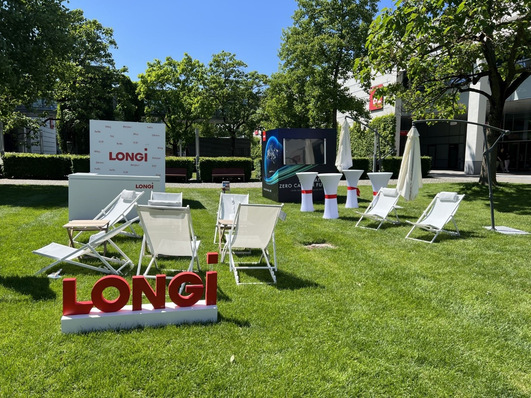Some people think that solar parks displace wildlife and create barren stretches of land. As you can see, quite the opposite is the case:
"There is no land consumption by solar parks. Solar parks enhance the landscape". This was underlined by Benedikt Ortmann, Managing Director of BayWa r.e. Solar Projects, at a press conference in Berlin on Wednesday. In contrast to conventionally farmed agricultural areas, the areas of the solar parks are not fertilized and treated with pesticides, but extensively farmed or mowed, also to ensure the accessibility and safety of the facilities.
The study examined the biodiversity of 75 solar parks in nine federal states. It was found that biodiversity within the solar parks was significantly higher than on surrounding agricultural land. For example, up to 44 butterfly and up to 35 grasshopper species were found in three solar parks in Brandenburg. Endangered lizards, amphibians and endangered plants also occur significantly more frequently in the PV open-air systems investigated than on intensively cultivated agricultural land. Rare birds such as larks also find an attractive habitat in the PV parks, according to study author Rolf Peschel.
Blockade by agricultural offices
"We are not taking land away from agriculture, but helping it to increase biodiversity in the landscape again," Ortmann said. The study now provides important scientific results for this. "It is often said on the spot that you are obstructing the landscape. Often the positive effects of solar parks on biodiversity are not yet known," added Thorsten Jörß, head of photovoltaics project development at EnBW.
Particularly in Baden-Württemberg, many agricultural offices and the farmers' association blocked the construction of new PV open space plants, Jörß said. Here it is now necessary to carry out now strengthened clearing-up work locally. "With new solar parks, we often switch to other federal states where acceptance is better," he said.
Solar park operators stand to compensation obligations
But the solar park operators stand to the compensation obligations for area interventions such as the construction of transformer stations, fences or access roads, as became clear at the ESD discussion. These compensation payments would then also benefit the affected regions and agriculture. It was also important to have public participation or municipal participation in the solar parks via municipal utilities in order to further strengthen local acceptance.
"In order to achieve the climate protection targets, photovoltaics as a low-cost and environmentally friendly form of generation will have to increase the capacity installed in Germany many times over. In addition to roof systems and sealed areas, other areas will inevitably have to be developed for solar parks. For local support, it is of fundamental importance to harmonise the interests of nature conservation, agriculture and solar power generation when building solar parks," emphasised Robert Busch, Managing Director of BNE. The new study now provides important findings for this. (hcn)
Here, in case you missed it, is Part 1 of this week's series.







